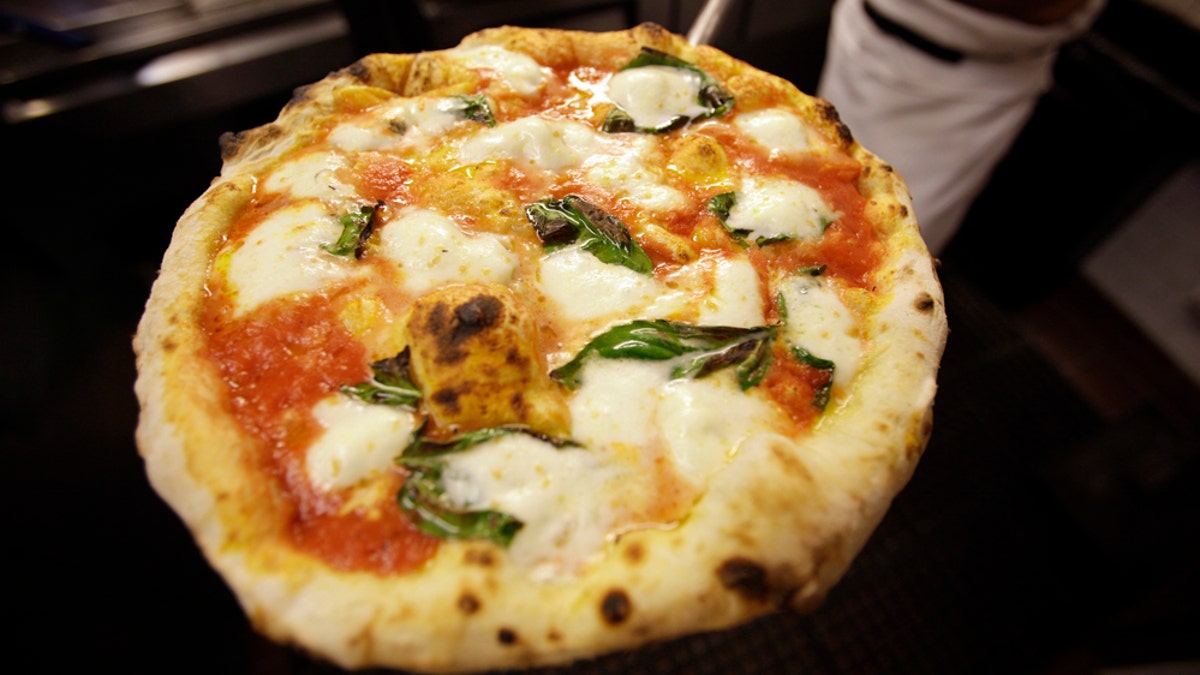
Jan. 27: Tony Gemignani removes a pizza margherita from an oven at Tony's Pizza Napoletana in San Francisco. Super Bowl Sunday is coming and pie-makers across the country are bracing for a pizza reaction. (AP Photo/Eric Risberg) (AP)
There are documented reasons to believe the Pompeiians ate pizza, and that they were already following an even more ancient culinary tradition that may have originated in Greece. When you think about it, pizza is a perfectly rational approach to fast food, which even in those olden times surely had its charms. The fundamentals are only the dough, a bit of kneading, and whatever topping or filling was at hand. That, and some heat.
Given that the humble tomato itself did not arrive in Europe until it was imported by Neapolitan sailors returning from the New World, there is reason to think the pizza as we know it today did not in fact exist until well into the 19th century. Naples is still written of these days as the epicenter, the place where we can all experience "authentic" pizza. That may be fair to all concerned, but the true joy and splendor of pizza is that it embraces so much variation, so much interpretation, that it has become a kind of culinary Pandora's Box.
This much is true: in Italy generally, and Naples certainly, pizza is a thin crust, with bubbled edges, usually lightly blackened, from the wood-fuelled brick pizza oven it cooks in. If you time it right, the dough, the sauce, and the additional toppings arrive at the same blissful level of readiness at exactly the same time, and you can barely touch the thing with your fingers, let alone eat it, when it first arrives at table.
Anything deep-dish, often referred to as Chicago-style pizza, is a different item. Urban legend reports it was invented by a retired football player turned restaurateur in Chicago. More of everything, from the crust to the toppings. but the principal is the same as what the Pompeiians had: a slightly raised outer edge for the dough.
Pizza dough is easy to make, requiring flour and water, some salt and yeast, and then a fair amount of kneading. That old cliche of tossing the dough in the air exists for a very good reason. It is a great way to lighten its consistency, to ensure a great thin crust. The toppings, tomato sauce and all, should not overwhelm you, or make you feel stuffed after two slices. Rather, the pizza should be treated, as it was in ancient times, as an efficient and extremely tasty way to sustain yourself. The better the quality of the ingredients, the better the pie. Two slices, as a first course. A whole pie equals a whole dinner. Just remember to raise the outer edges to hold in all the goodness, and bless the blackened outer rim. It proves you knew what you were doing.
